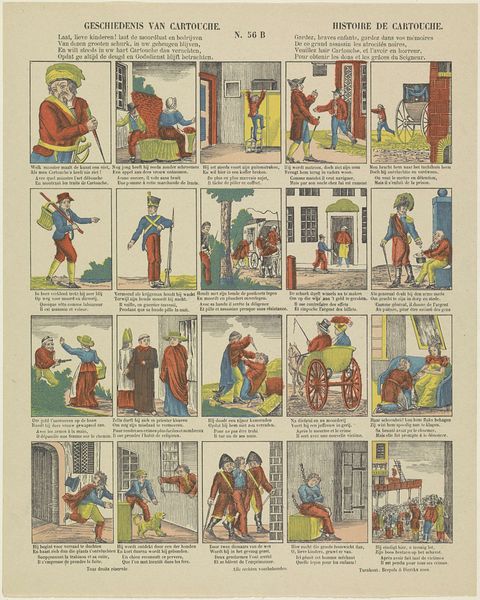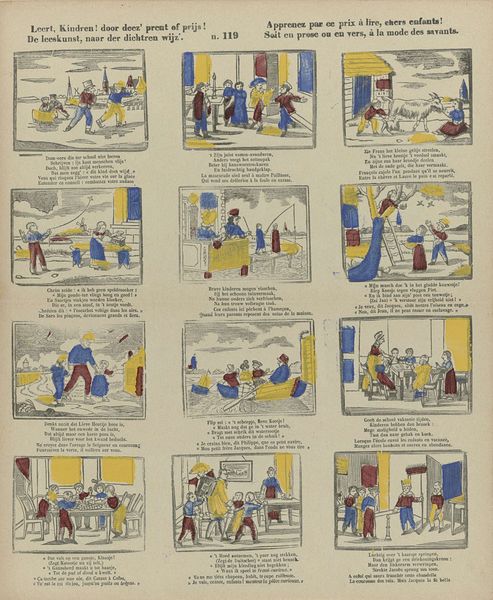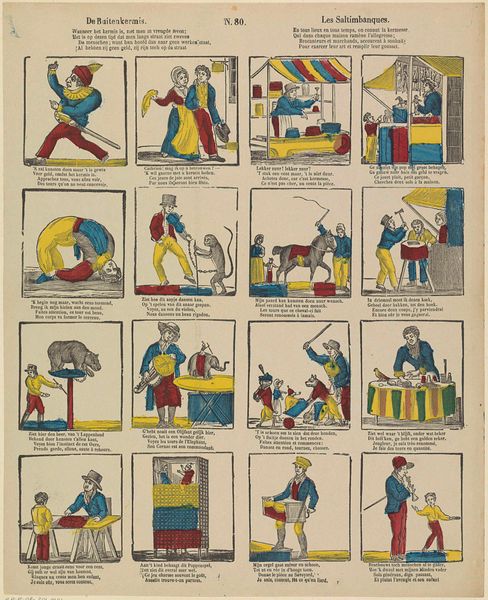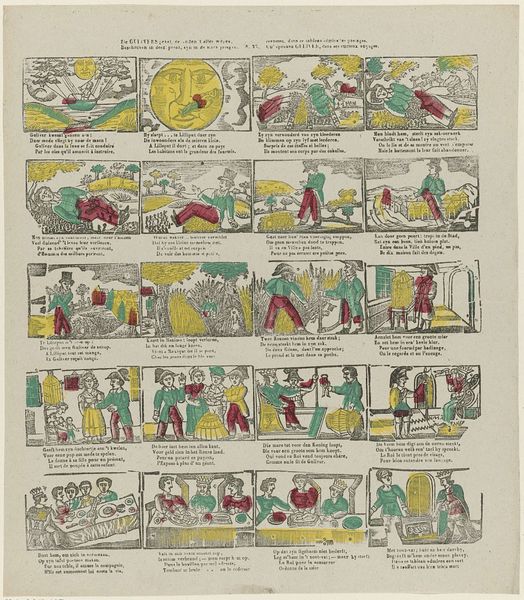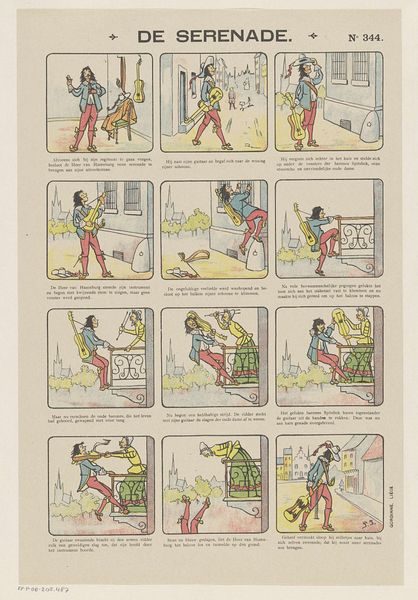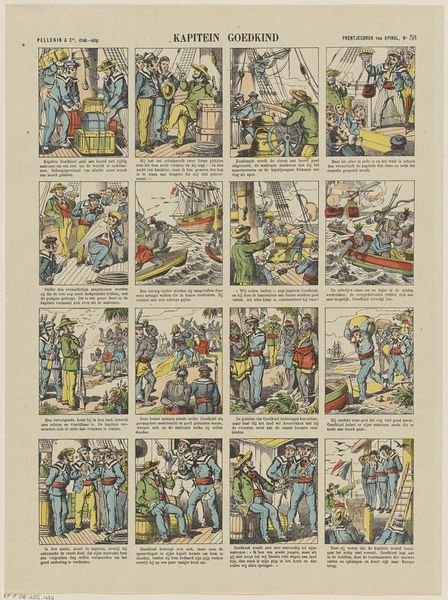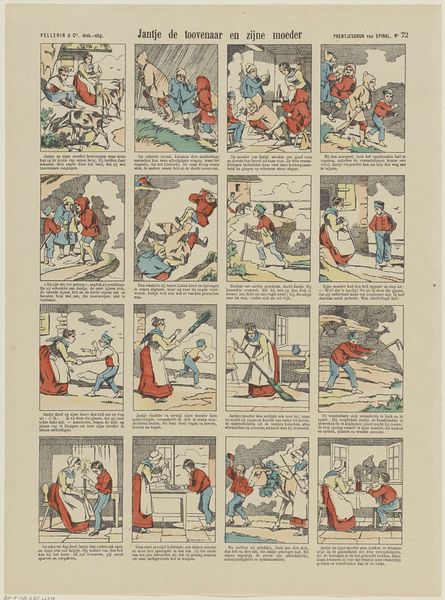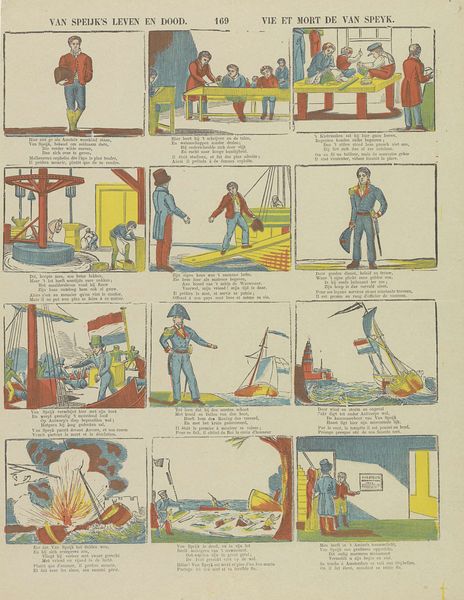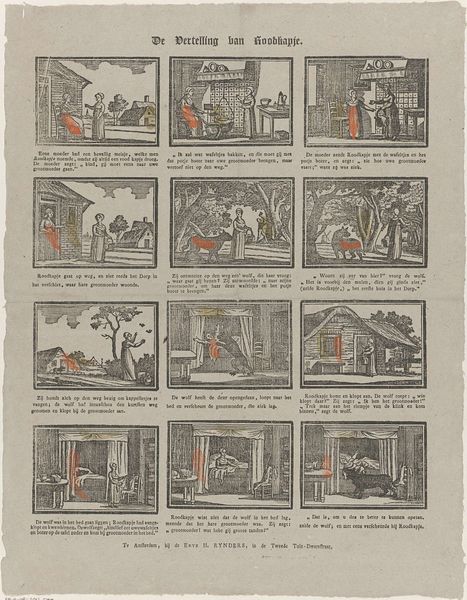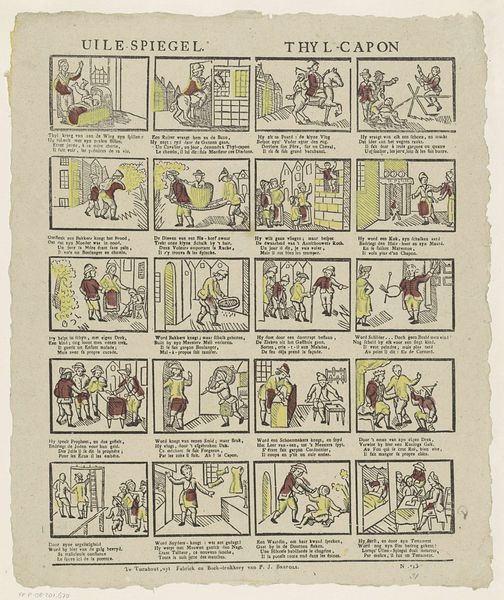
Van Speijk's Leven en Dood 169 Vie et Mort de Van Speyk 1880 - 1911
0:00
0:00
brepolsdierckxzoon
Rijksmuseum
graphic-art, lithograph, print
#
graphic-art
#
art-nouveau
#
narrative-art
#
lithograph
# print
#
linocut print
#
watercolour bleed
#
watercolour illustration
#
history-painting
#
watercolor
Dimensions: height 38.2 cm, width 29.8 cm
Copyright: Rijks Museum: Open Domain
Curator: Let’s take a look at "Van Speijk's Leven en Dood," created between 1880 and 1911 by Brepols & Dierckx Zoon. It’s a lithograph print showcased here at the Rijksmuseum. What’s your initial response? Editor: It strikes me as almost heartbreakingly naive. The scenes play out like stills from an old puppet show. There's a childlike innocence to the composition despite depicting such a tragic and heroic tale. Curator: Indeed. The narrative is presented in sequential form, a format historically popular in broadsheets and other forms of printed ephemera aimed at mass consumption. We see here the romanticized visual construction of Dutch national identity. Editor: You’re right, and the choice of lithography—a more accessible and reproducible medium than, say, engraving—further reinforces this connection to popular culture and dissemination. Did the artist engage with a collaborative workshop? Curator: Brepols & Dierckx Zoon was a printing firm. Looking at it as an object, its materiality points to specific methods of production and a defined socio-economic context. I wonder about the labour involved. Editor: Right, all of the small repetitive motions performed while someone applied watercolor, bleed after bleed. But in its own way, that effort speaks to Van Speijk’s commitment. Curator: It's interesting how the limitations of the medium also influence the storytelling; you can almost hear the town crier proclaiming each scene to an assembled crowd! Editor: Absolutely. It really highlights the contrast between high art ideals and these everyday art objects that spoke directly to the populace. Almost seems made to be cut apart by children as lessons or paper toys. Curator: On the whole, "Van Speijk's Leven en Dood" gives us much to consider regarding the production and purpose of images at a critical moment in Dutch history. Editor: It's a surprisingly poignant reminder that art can both celebrate and examine historical narratives through popular accessibility, filtered down by each individual maker who was putting these works together. I quite appreciate it.
Comments
No comments
Be the first to comment and join the conversation on the ultimate creative platform.

